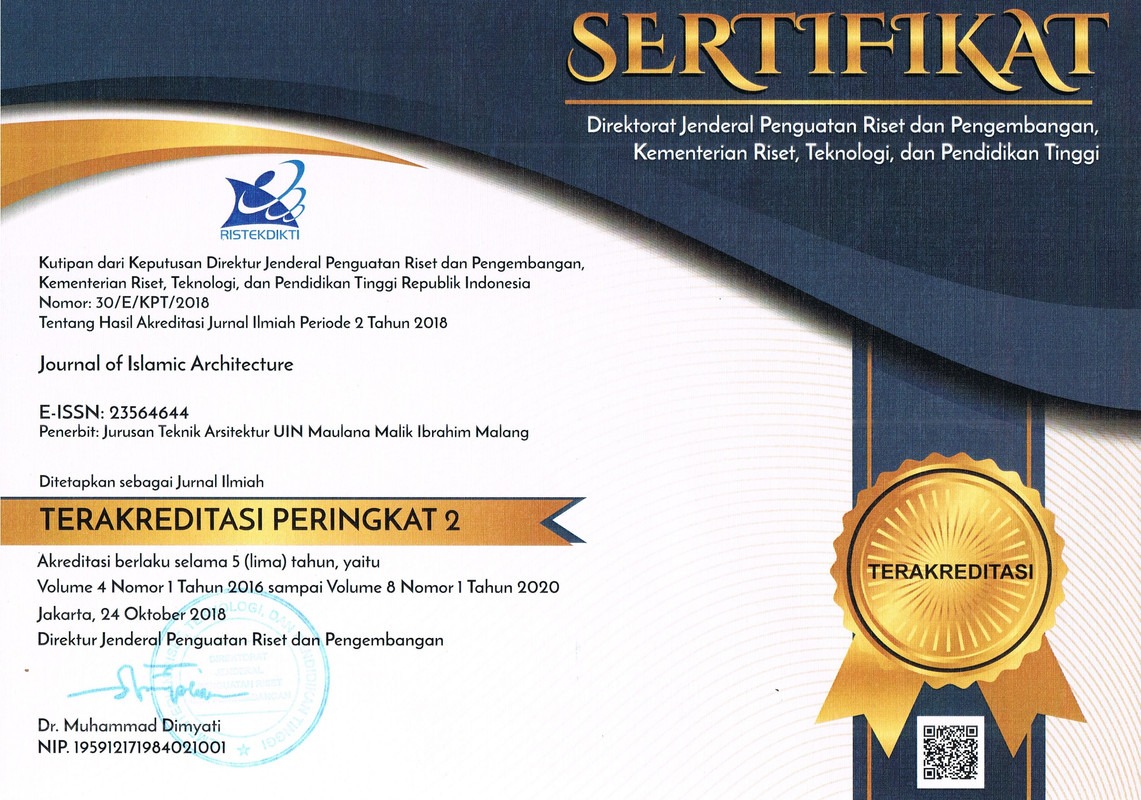Ottoman Mosques In Sana'a, Yemen Archeological And Architectural Study
Abstract
The Ottoman presence in Yemen is divided into two periods, first period from 945 AH until 1045 AH, and then the second from 1289 AH until 1336 AH, Ottomans interested during their presence in Yemen to establish different types of charitable buildings especially, religious buildings, which include mosques, madrassas, and shrines. The aim of interest of Ottomans governors to make significant civilized and architectural renaissance in Yemen, especially Sana'a, with emphasis on establishment mosques to get closer to God and to gain sympathy and love of the people of Yemen. Most of these mosques do the role of the madrassas as documents indicate like mosque of Özdemir, Al-Muradiyya and Al-Bakiriyya therefore, Ottomans are Hanifite Sunni and want by these mosques to facing shite and spread Sunni.In this paper researcher will discuss styles of Ottoman mosques in Sana'a. There are eight mosques, seven dates to the first period of Ottomans in Yemen and only one date to the second period of Ottomans in Yemen.
Keywords
Full Text:
PDFReferences
AL-Thor Ammat AL-Malik Ismail Qasim, Ottoman ruler and their main construction, Ottoman periods rule at the first and second to Yemen 1538-1635 / 1873-1918 [الولاة العثمانيون وأبرز أعمالهم الإنشائية في فترتي الحكم العثماني الأولى والثانية لليمن] (in Arabic), journal of King Saud University part22, Riyadh, 2010,p. 127-149
Ghailan Hamood Ghailan,Mihrabs of Sana'auntil the late 12th A.H/18 A.D, Publications of the Ministry of Culture and Tourism in Sana'a,2004. Fig.1 ,p.242
Salim Mustafa Sayed, The first Ottoman conquest of Yemen [الفتح العثماني الأول لليمن] (in Arabic), Dar Al-Amin press, Cairo, Edition 5, 1999, p.457.
Ibn al Akwa' Ismail , Islamic madrassas in Yemen [المدارس الإسلامية في اليمن] (in Arabic), Sana'a University Press , Sana'a, 1980,p.282 , Shiha Mustafa Abdullah, a comparative study between the Egyptian school and Yemeni school[دراسه مقارنة بين المدرسة المصرية والمدرسة اليمنية] (in Arabic), the history of Islamic schools in Egypt, the Egyptian General Authority for book , Cairo, 1992, p. 436.
For more about Hassan pasha,KhalifaRabeaHamed, architectural works of minister Hassan Pasha in Yemen from the manuscript "Murad conquests in Yemeni authorities"[ الأعمال المعمارية لحسن باشا الوزير في اليمن من واقع مخطوط " الفتوحات المرادية في الجهات اليمانية "] (in Arabic), Journal of Faculty of Arts, University of Sana'a, 1991.
Mubarak Ali Pasha, the new compromise plans for Egypt and Cairo and its ancient and famous cities [الخطط التوفيقية الجديدة لمصر القاهرة ومدنها وبلادها القديمة والشهيرة] (in Arabic), part 3, the major printing press in Bulaq, 1306, p. 19.
BahnasyAfif, the Great Mosque of Sana'a[الجامع الكبير بصنعاء] (in Arabic), United Nations Organization for Education , Science and Cultural , UNESCO, Paris, i 1.1988, p. 66.
http://archnet.org/sites/3800/media_contents/336.
Barbara Finster know this type of religious as (The Courtyard mosques), they were apparently almost nonexistent in Yemen in the first centuries after the Hijra. Finster, Barbara. "An Outline of the History of Islamic Religious Architecture in Yemen." In Muqarnas IX: An Annual on Islamic Art and Architecture, edited by Ann Oleg Grabar. Leiden: E.J. Brill, 1992, p.127
Finster, An Outline of the History of Islamic Religious Architecture in Yemen , p.124
Manzoni Renzo, Un viaggio a Sana'a 1877-1878, Social Fund for Development , Sana'a,2001,p.197
The madrasa was introduced into Yemen by the Ayyubids in the twelfth century, and essentially replaced foundations that only mosques. According to written records, the first madrasa in Zabid was an iwan structure. Large madrassas might have in addition a library, a khangah, and a Quranic school for children. P136 outline of religious buildings in Yemen. For examples of madrassas of Yemen, Ibn al Akwa' Ismail, Islamic madrassas in Yemen.
El Banna, El Sayed Mahmud Mohamed, Study the restoration and maintenance of the old city of Sana'a during the Ottoman era, PhD,(faculty of archeology, Cairo university, 1993),Fig.69.
Ghailan, Mihrabs of Sana'a,Fig.96 ,p.281
Al-Haddad Muhammad Hamza, Encyclopedia of Islamic architecture in Egypt from the Ottoman conquest to the end of the era of Muhammad Ali [موسوعة العمارة الإسلامية في مصر من الفتح العثماني إلى نهاية العصر عهد محمد علي] (in Arabic) (the first book), Zahra Al-Sharq Library press, Cairo, 2003, p.61-62.
Shiha, Introduction to Islamic architecture and arts in the Yemen Arab Republic, pp. 3:22
For more about the dome mosque ,Al-Haddad Muhammad Hamza, Encyclopedia of Islamic architecture in Egypt from the Ottoman conquest to the end of the era of Muhammad Ali.
EnabMohamed Ahmed Abd-El-Rahman, Remaining ottoman mosques in Sana'a comparative architectural archeological study, PhD Thesis, faculty of archeology, Cairo University, 2014.
Organization of Islamic Capitals and Cities, Principles of architectural design and urban planning in the medieval Islamic "analytical study on the capital Sana'a"[، أسس التصميم المعماري والتخطيط الحضري في العصور الاسلامية دراسة تحليلة علي العاصمة صنعاء] (in Arabic), Al- Taher Center for Engineering Consultancy , Jeddah, Saudi Arabia , 2005,p.32
Organization of Islamic Capitals and Cities, analytical study on the capital Sana'a,p.32
http://www.ircicaarchdata.org/ircica/show_adds.php?type=1&id=61
http://archnet.org/sites/3819/media_contents/318
For more about ottoman mosques styles in Istanbul, - Goodwin Godfrey, history of Ottoman architecture, London, 1971.
R. B. Serjeant, Ronald Lewcock (1983). Sana: An Arabian Islamic City. World of Islam Festival Pub Trust, London, 1983, p.376.
Sayed Ayman Fouad, Islamic doctrines in Yemen until the end of the sixth century [المذاهب الإسلامية في بلاد اليمن حتى نهاية القرن السادس الهجري] (in Arabic), the Egyptian - Lebanese dar for press, Cairo, 1988, p. 85.
Enab, remaining ottoman mosques in Sana'a, p.490.
Müezzin mahfili (Turkish), a special raised platform in a mosque, opposite the minbar, where a muezzin kneels and chants in response to the imam's prayers. Mehfil or mahfil (Urdu), a gathering or evening of courtly entertainment of poetry or concert of Indian classical music and Pakistani classical music (particularly Hindustani classical music) and dance, performed for a small audience in an intimate setting. https://en.wikipedia.org/wiki/Mahfil
Enab, remaining ottoman mosques in Sana'a.Fig.120, p.551
DOI: https://doi.org/10.18860/jia.v4i3.3533
Refbacks
- There are currently no refbacks.






